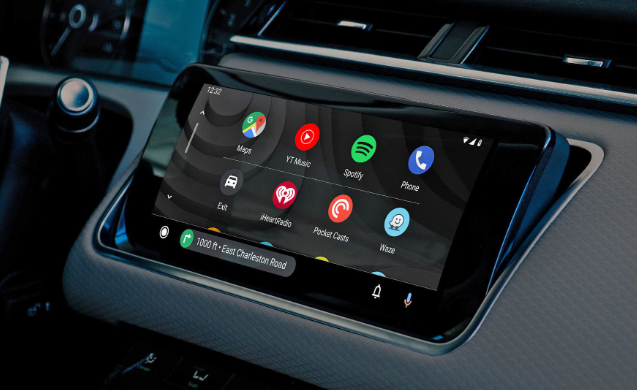
Navigation info is now everywhere.
Until recently, infotainment systems were sort-of-useful at best or plagued with horrendous interfaces at their worst. The introduction of Android Auto and CarPlay got automakers to finally start thinking about how people use touchscreen devices. Google and Apple took what they knew about touchscreens, voice assistants and media, creating easy-to-use interfaces.
Automakers wised up and now most have systems that no longer try the patience of drivers while delivering useful information. With that in mind, Google has updated Android Auto (rolling out now) to compete with the latest from carmakers. This latest update is great, UI-wise, but more importantly, it makes sure that Google’s greatest asset to the car — Google Maps — is front and center.
Now wherever you are in Android Auto and following a route, the information is shown along the lower portion of a car’s display — no more launching Spotify and wondering if you’re about to miss a turn while choosing a playlist.
I found the route information sitting at the bottom of the screen easy to read and incredibly helpful while driving around the Bay Area. A quick tap on the bottom of the display brought me back to Google Maps which also has an updated, easier-to-read font.
Having one of the most used features (navigation) available at all times is a safer solution than having drivers tapping to switch between features.
I also found adding additional destinations along my route to be easier too, thanks to Google Assistant which is available via the “Hey Google” wake word or tapping the tiny microphone icon.
Google Assistant also handles the launching of apps found in the new app launcher screen. The weird, notification-style layout of the home screen is gone. Instead, Android Auto’s home screen now resembles a tablet with all your apps in one place.
If you have a lot of Android Auto compatible apps I can see where this screen could get crowded. It’s not exactly ideal, but if you use the Google Assistant to launch and control apps as I did, you should be fine.
Google isn’t alone updating its in-car system. Apple’s CarPlay is getting its own update when iOS 13 officially lands on iPhones in the fall of this year. Like Android Auto, it’s forgoing the single-feature-on-a-screen UI and serving up information from more than one feature.
Behind the wheel, safety should be first and foremost. Touchscreens — while nice — can sometimes be a distraction. Without the ability to build up muscle memory or have something tangible to touch, drivers can be pulled from the act of driving to looking for the correct app or feature to press. The latest version of Android Auto reduces that issue by making sure that navigation is always there and nearly everything else is a voice command away.


